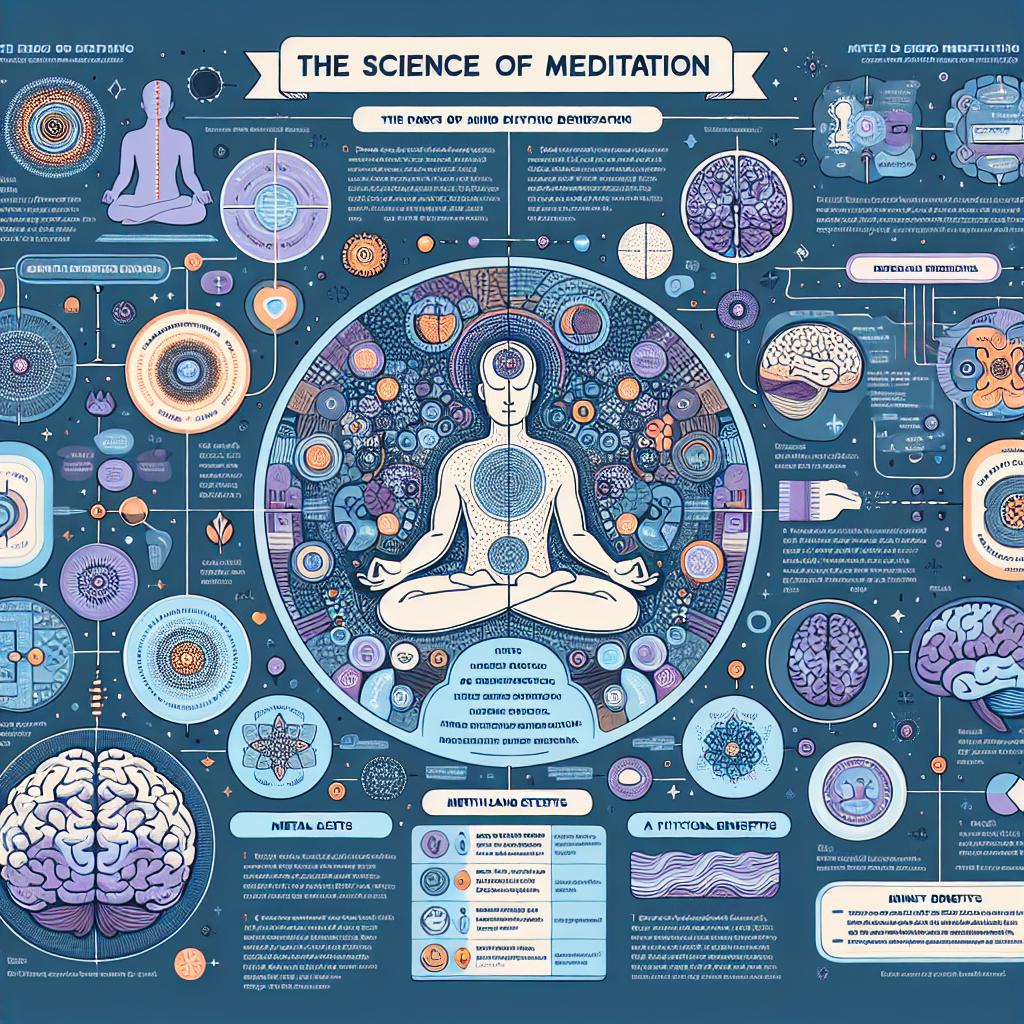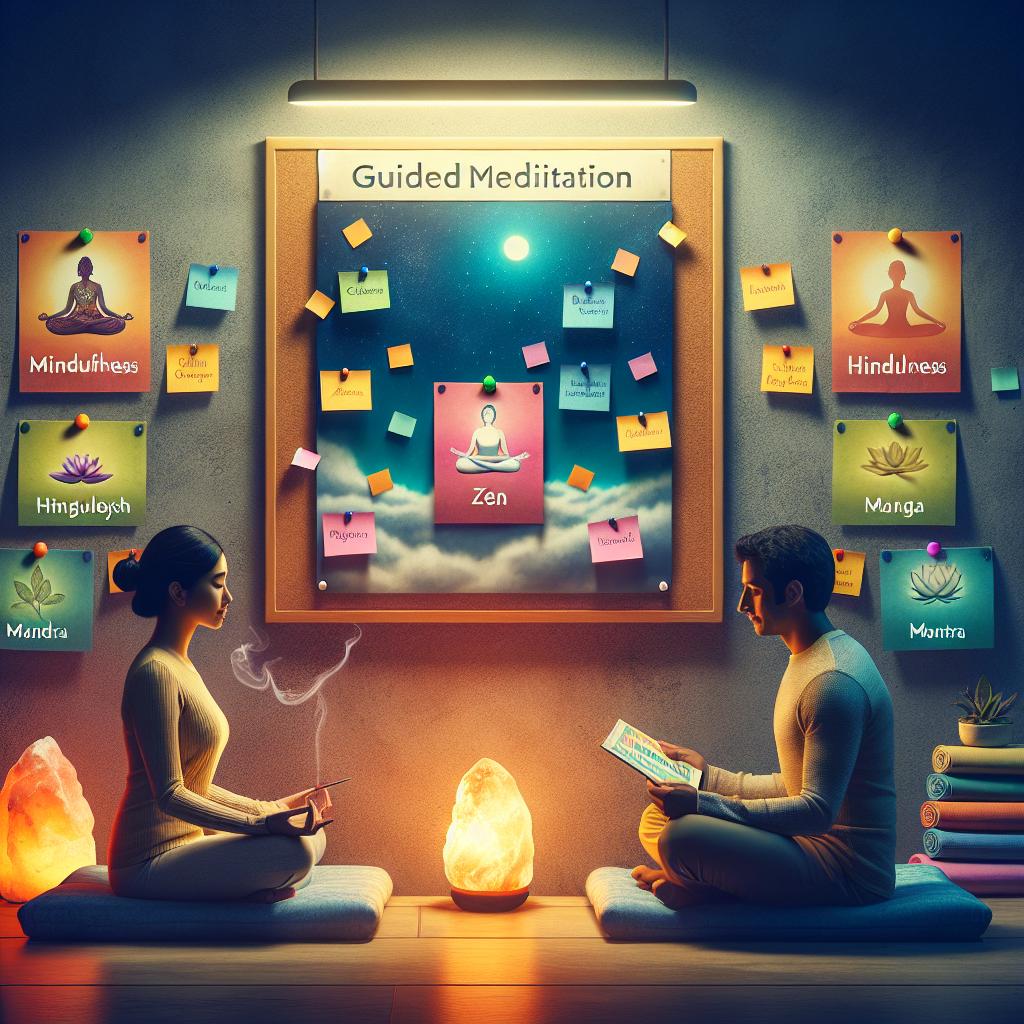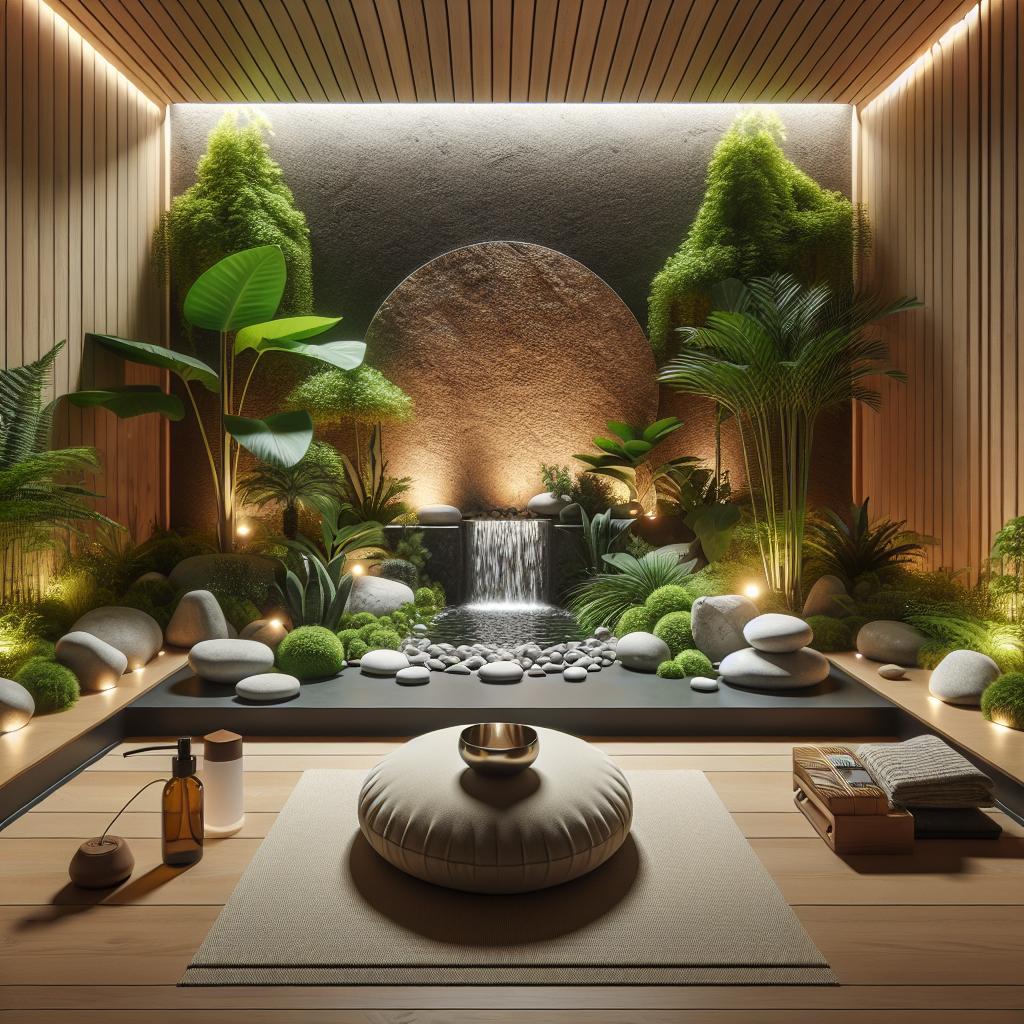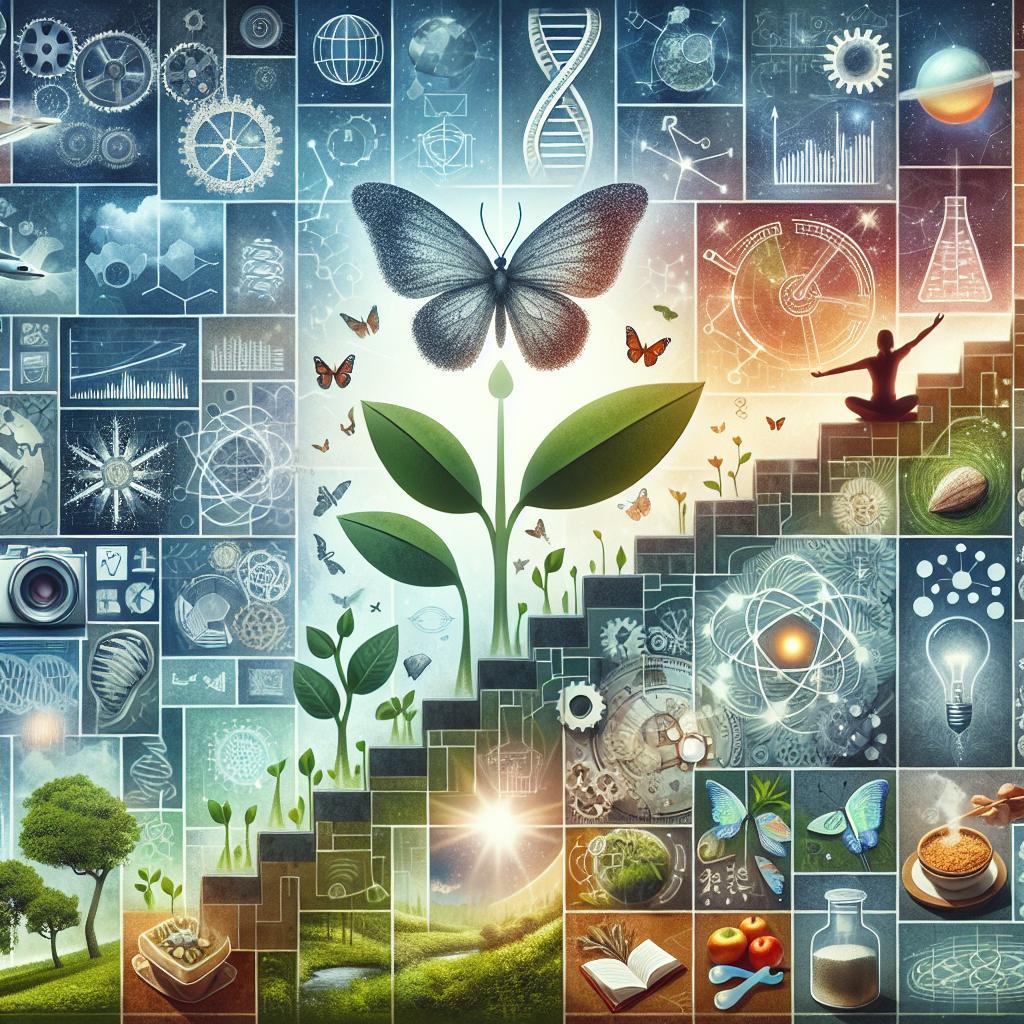Mindfulness and Meditation Practices

In a world buzzing with ceaseless notifications and relentless to-do lists, the quest for tranquility can feel like chasing shadows. Yet, anchored deep within the human experience lies a powerful oasis of calm that we can access at any time. Welcome to the realm of mindfulness and meditation—a journey not into far-off lands, but into the very essence of our being. This article delves into the ancient yet timeless practices that promise to tame the tempest of modern life, offering a compass to navigate through the storms with serene clarity. Whether you’re a curious beginner or a seasoned practitioner, join us as we explore the profound simplicity and transformative power of these sacred traditions.
Table of Contents
- Journey to Inner Peace: Understanding the Basics of Mindfulness
- The Science Behind Meditation: How It Benefits the Mind and Body
- Daily Practices for Mindfulness: Integrating Calm into Your Routine
- Guided Meditations: Finding the Right Fit for Your Needs
- Overcoming Challenges: Staying Consistent with Your Practice
- Creating a Mindful Space: Enhancing Your Meditation Environment
- Q&A
- The Conclusion

Journey to Inner Peace: Understanding the Basics of Mindfulness
Embracing mindfulness and meditation can be a profound journey, weaving through the complexities of daily life to find a place of tranquility. At its core, mindfulness is about being fully present in the moment, acknowledging thoughts and feelings without judgment. This practice can start with simple activities such as:
- Mindful Breathing: Focusing on one’s breath to anchor the mind.
- Body Scan: Paying attention to physical sensations, from head to toe.
- Gratitude Journaling: Writing down daily things to be thankful for.
- Mindful Eating: Savoring each bite, being aware of the taste, texture, and aroma.
The benefits of incorporating mindfulness and meditation into your daily routine are numerous, including reduced stress, enhanced focus, and improved emotional regulation. Meditation practices can vary widely, and many find guided meditations helpful as they begin. Here’s a quick overview of popular meditation styles:
| Style | Focus |
|---|---|
| Mindfulness Meditation | Being present without judgment |
| Transcendental Meditation | Using a mantra to avoid distraction |
| Guided Meditation | Following a narrator’s guidance |
| Loving-Kindness Meditation | Fostering compassion and love |

The Science Behind Meditation: How It Benefits the Mind and Body
Meditation has been a cornerstone of mental and physical well-being for centuries. Modern science has delved into its transformative power, providing empirical evidence for its benefits. Utilizing techniques like mindfulness, guided visualization, and breathing exercises, meditation assists in reducing stress hormone levels, notably cortisol. Consistently practicing meditation helps activate the parasympathetic nervous system, promoting relaxation and lowering blood pressure. According to research, **regular meditation** can boost neurotransmitters like serotonin and dopamine, contributing to an enhanced mood.
The advantages extend beyond the biochemical realm. Cognitive functions receive a substantial boost through meditation, with improvements seen in focus, memory retention, and emotional regulation. Studies have illustrated that meditators show an increased gray matter concentration in areas of the brain associated with learning and memory. Moreover, the practice can foster emotional resilience, assisting individuals in responding more calmly to life’s challenges. Here are some key benefits:
- Enhanced mental clarity and concentration
- Reduced symptoms of anxiety and depression
- Improved sleep quality
- Increased emotional stability
| Benefit | Description |
|---|---|
| Stress Reduction | Activates relaxation response, lowering stress hormone levels. |
| Mood Enhancement | Boosts serotonin and dopamine levels, enhancing overall mood. |
| Improved Focus | Increases gray matter in brain regions linked to learning. |

Daily Practices for Mindfulness: Integrating Calm into Your Routine
Starting your day with **mindfulness** can set a positive tone for the hours ahead. Begin each morning with a few minutes of **deep breathing exercises** and meditation. These simple practices can help you ground yourself and focus on the present moment. Consider integrating small mindful activities into your routine, such as a short **nature walk** or a few minutes of **gentle stretching**. While performing these activities, pay attention to your breathing, the sensations in your body, and the environment around you. This can help you feel more connected and present as you step into your day.
Throughout your day, incorporate mindful moments to maintain a sense of calm. Here are a few suggestions to get started:
- Mindful Eating: Take the time to savor your meals, noticing the textures and flavors.
- Body Scan Meditation: Spend a few minutes in the afternoon scanning your body for tension, and breathe deeply into those areas.
- Mindful Communication: Focus on active listening during conversations, making a conscious effort to be fully present with the speaker.
- Reflection Time: End your day with a brief reflection on what went well, and what you’re grateful for.
| Practice | Duration |
|---|---|
| Deep Breathing | 5 minutes |
| Nature Walk | 10-15 minutes |
| Body Scan Meditation | 5-10 minutes |
| Reflection Time | 5 minutes |

Guided Meditations: Finding the Right Fit for Your Needs
Embarking on a journey of guided meditations can be transformative, yet finding the right style that aligns with your needs can be a process of exploration. Various meditation techniques cater to different aspects of well-being, so it’s important to identify what resonates with you. Some popular forms include **mindfulness meditation**, **body scan meditation**, and **loving-kindness meditation**. Each of these methods offers unique benefits, from stress reduction to fostering a sense of compassion and inner peace.
- Mindfulness Meditation: Anchors you to the present moment, enhancing clarity and focus.
- Body Scan Meditation: Promotes relaxation by systematically focusing attention on different parts of the body.
- Loving-Kindness Meditation: Cultivates compassion and positivity towards oneself and others.
| Meditation Type | Key Benefit |
|---|---|
| Mindfulness Meditation | Enhanced focus |
| Body Scan Meditation | Deep relaxation |
| Loving-Kindness Meditation | Increased compassion |
Consider experimenting with different guided meditations to discover which practice most effectively nurtures your mind, body, and spirit. Whether you are looking to ease anxiety, improve sleep, or simply cultivate a more mindful lifestyle, there is a meditation style tailored to support your specific intentions.

Overcoming Challenges: Staying Consistent with Your Practice
One of the most formidable challenges in mindfulness and meditation is maintaining **consistency**. It’s all too easy to fall off track when life gets busy or stressful. Here are some strategies to help you stay committed:
- **Set a Schedule**: Designate a specific time each day for your practice. Morning or evening routines work well for many people.
- **Start Small**: Instead of aiming for 30 minutes right away, begin with 5-10 minutes and gradually increase the duration.
- **Create a Dedicated Space**: Having a dedicated area for meditation can help condition your mind to focus during your practice.
- **Use Technology**: Apps and guided meditations can provide structure and support to your practice.
It’s also crucial to track your **progress** and **adjust** when needed. This table may help keep things in perspective:
| Week | Target (min/day) | Actual (min/day) | Notes |
|---|---|---|---|
| 1 | 10 | 8 | Building the habit |
| 2 | 15 | 12 | Starting to feel more natural |
| 3 | 20 | 18 | Better concentration |
Remember, the goal is not perfection but persistence. Even if you miss a day or two, get back on track without self-reproach and celebrate the journey.

Creating a Mindful Space: Enhancing Your Meditation Environment
Crafting a serene and harmonious environment is pivotal for a fruitful meditation practice. Start by selecting a space where you feel most at ease. This location should be quiet, free from interruptions, and preferably bathed in natural light. To further cultivate a sense of tranquility, consider incorporating **natural elements** such as potted plants, stones, or a small water feature. These elements can create a connection with nature, helping to ground your senses and reduce stress.
- Lighting: Opt for soft, diffused lighting through candles or salt lamps to produce a gentle ambiance.
- Aromatherapy: Utilize essential oils like lavender or eucalyptus for their calming effects.
- Comfort: Invest in a quality meditation cushion or mat to maintain comfort during longer sessions.
Another aspect to consider is the **auditory environment**. The right sounds can notably elevate your meditation experience. Background noises like soft instrumental music or nature sounds can drown out distractions and assist in maintaining focus. For a more personalized touch, you can create a playlist tailored specifically to your preferences. Moreover, decluttering the space is critical. A minimalist approach encourages clarity of mind, allowing you to let go of external chaos and deep dive into your inner world.
| Element | Purpose |
|---|---|
| Aromatherapy | Enhances relaxation and focus |
| Lighting | Creates a calm and inviting atmosphere |
| Comfort Items | Supports prolonged meditation |
Q&A
Q&A: Unlocking the Power of Mindfulness and Meditation
Q: What exactly is mindfulness?
A:
Mindfulness is the practice of being fully aware and present in the moment. It involves paying attention to your thoughts, feelings, and sensations without judgment. Imagine sitting by the seaside, feeling the sand under your toes and listening to the waves; that’s mindfulness in action — simply being in the now.
Q: How does meditation fit into mindfulness?
A:
Meditation is like the gym for your mindfulness muscles. While mindfulness is a state of active, open attention, meditation is the practice that trains your mind to maintain that state. Think of it as the structured exercise that enhances your ability to be mindful, whether through focused breathing, guided imagery, or mantras.
Q: Are there different types of meditation practices?
A:
Absolutely! Meditation isn’t a one-size-fits-all practice. Here are a few popular types:
- Mindfulness meditation: Focuses on the present moment.
- Loving-kindness meditation: Promotes compassion towards oneself and others.
- Body scan meditation: Enhances bodily awareness and relaxation.
- Transcendental meditation: Uses mantras to transcend ordinary thought.
Each type offers unique benefits depending on what you’re seeking to achieve.
Q: How can mindfulness and meditation benefit someone in their daily life?
A:
The benefits span across physical, mental, and emotional realms. Regular practice can reduce stress, enhance emotional regulation, improve focus and concentration, boost immune function, and even foster a sense of overall well-being. It’s like finding an oasis of calm amidst the chaos of everyday life.
Q: Can someone with a busy lifestyle still practice mindfulness?
A:
Absolutely! Mindfulness isn’t about carving out large chunks of time; it’s about integrating awareness into what you already do. You can start with simple practices like mindful eating, where you savor every bite of your meal, or mindful walking, where you appreciate each step. Even a few minutes of focused breathing can make a significant difference.
Q: How long does it take to see the benefits of these practices?
A:
This can vary from person to person. Some may notice a sense of calm and focus after just a few sessions, while for others it might take a few weeks of regular practice. The key here is consistency; think of it as planting a garden—nurture it daily, and you’ll soon see it bloom.
Q: Are there any common misconceptions about mindfulness and meditation?
A:
Certainly, there are a few. One significant misconception is that you need to completely clear your mind. In reality, it’s not about having no thoughts but about observing them without getting entangled. Another myth is that it requires a lot of time or special conditions, whereas mindfulness can be practiced anytime, anywhere.
Q: How can one get started with mindfulness and meditation?
A:
Starting can be as simple as setting aside five minutes each day. Find a quiet spot, sit comfortably, and focus on your breath. Many find guided meditations, available through apps or online videos, to be helpful beginners’ tools. Remember, consistency is more important than duration at the beginning.
Q: Can anyone practice mindfulness and meditation, irrespective of age or background?
A:
Yes, mindfulness and meditation are incredibly inclusive practices. They don’t require any special skills or significant investment. Whether you’re a child, adult, or senior, these practices can be adapted to suit your needs and circumstances. It’s about creating a space where everyone can find their moment of peace.
Embarking on the journey of mindfulness and meditation can be transformative, offering a pathway to a more balanced and enlightened life. Whether you’re seeking to manage stress, enhance your focus, or simply find a few moments of peace in a hectic world, these practices welcome you with open arms.
The Conclusion
As we reach the twilight of our exploration into the world of mindfulness and meditation, it becomes clear that these ancient practices offer more than just moments of tranquility. They are gateways to a deeper understanding of ourselves and the world around us. The rhythmic cadence of breath, the silent whispers of a wandering mind, and the gentle embrace of present moment awareness all weave together a tapestry of inner peace and heightened clarity.
Whether you are a seasoned practitioner or someone taking their first mindful breaths, the journey is uniquely yours. Each pause, each intention, brings you closer to the essence of what it means to truly live. As you step away from these words and back into the expanse of your daily life, remember that mindfulness and meditation are not destinations but ever-present companions. Embrace them, and let each moment be a new beginning, a gentle unfolding of your inner landscape.
May the calm you seek find you in abundance, and may the stillness within illuminate your path forward. Until we meet again in the boundless space of awareness, keep breathing deeply, thinking mindfully, and living fully.

 Bachelor of Business Studies with Education
Bachelor of Business Studies with Education 












Responses